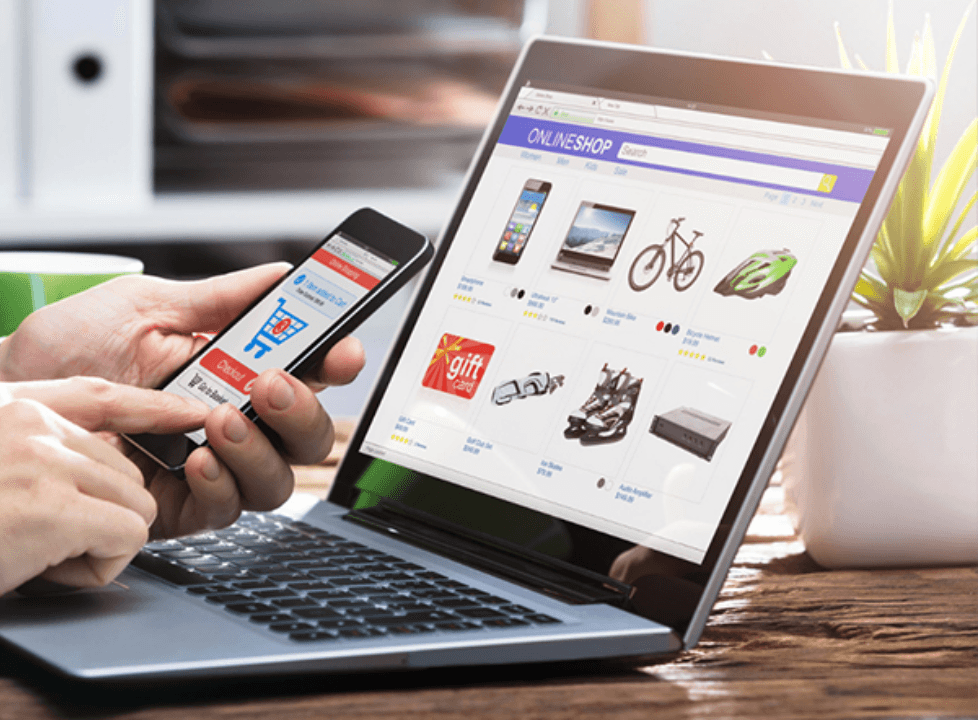Modern e-commerce shoppers crave authenticity, and user-generated content (UGC) delivers it. In fact, a 2024 survey found 54% of consumers trust online reviews above all other sources (versus only 24% trusting friends/family opinions)businesswire.com, and about 72–85% of people say peer reviews are more trustworthy than brand ads business.com blog.reputationx.com. Unlike polished ads that consumers often skip in seconds loox.app, real customer photos, videos, and testimonials act as “virtual word of mouth.” This authentic social proof boosts engagement and conversions. For example, business analysis shows that advertising built on UGC can raise click-through rates by ~400% business.com, and simply displaying product reviews on a site raises overall conversion by about 8.5% (jumping ~100% for shoppers who interact with the reviews) business.com. As Yotpo observes, product reviews have become “strategic assets” that “significantly boost search engine rankings and conversion rates”yotpo.com. In short, customer reviews and UGC deliver fresh, relatable content that search engines and consumers both prioritize yotpo.com business.com.
Collecting Customer Reviews and UGC
Encouraging customers to share their experiences is the first step. Best practices include:
- Ask right after purchase: Send automated post-purchase emails or texts with a direct link to write a review. Offering a small incentive (like a discount code or loyalty points) can double participation, but keep the process simple monetate.com.
- Run social campaigns: Launch branded hashtags or UGC contests on Instagram, TikTok, etc. For example, encourage customers to post unboxing videos or lifestyle photos with your product under a custom tag. Each tagged post becomes easy social proof to reshare monetate.com.
- Host giveaways and rewards: Turn UGC into a game. Ask for photo or video reviews in exchange for entry into a prize drawing or loyalty credit. Contests dramatically boost engagement compared to ordinary review requests monetate.com.
- Make it fun and easy: Feature a call-to-action on your website (e.g. “Share your #BrandStory”) and QR codes on packaging linking to review forms. Even a gentle callout like “Loved it? Tell us!” on product pages can increase feedback.
Marketing platforms automate much of this. Tools like Yotpo, Loox, Stamped.io, and Bazaarvoice can trigger review emails, collect star ratings and photos, and integrate UGC widgets on your site. For example, Stamped promotes building trust via UGC, enabling brands to “capture and showcase high-impact product reviews” and share them across marketing channels bigcommerce.com. Similarly, Yotpo’s all-in-one solution streamlined Steve Madden’s tech stack, resulting in 57% more reviews collected and a “major increase in conversion” after launch yotpo.com. (We’ll discuss these case results later.) In short, by proactively requesting reviews and rewarding UGC contributions, brands can amass a library of authentic customer content with minimal manual effort.
Showcasing UGC On-Site (Reviews, Galleries, Star Ratings)
Once you’ve collected UGC, display it prominently. Embed star ratings and reviews on product pages, homepages, and category listings to provide social proof at every stage. For example, Stamped.io offers mobile-responsive widgets like carousel sliders and side-drawers to feature photo reviews and Q&A bigcommerce.com. You can also integrate Instagram feeds or shoppable galleries. For instance, Mountain House used an embedded Instagram carousel of customer adventure photos on its homepage【57†】.
Figure: A homepage screenshot (Mountain House) embedding an Instagram feed of real customer photos (UGC), which reinforces brand authenticity and engagement.
Such live social galleries add fresh visual content and encourage shoppers to linger. Neil Patel notes that sites showcasing UGC (e.g. user photo galleries under reviews) see higher engagement: visitors explore images of smiling customers and often click through to read the full review neilpatel.com. These widgets can be shoppable – linking directly to products – driving clicks and conversions. Also, be sure to mark up your reviews with schema so search results show star ratings. Listings with a star snippet (e.g. “4.7★ (328 reviews)”) get significantly higher click-through rates (studies show up to ~35% more clicks) yotpo.com.
Leveraging UGC in Ads and Social Campaigns
UGC isn’t just for your site – it can supercharge your advertising. Ads featuring real customer images or video testimonials perform far better than generic creatives. Studies show UGC-based ads have roughly four times the click-through rate of standard ads business.com. They also tend to cost less per acquisition (some brands report up to 70% savings on CPM) while boosting memorability and shareability business.com joinbrands.com.
Use customer photos and reviews in your social ads on Facebook, Instagram, and TikTok. For example, create a Meta carousel ad where each slide shows a customer photo and a quote from their review. TikTok advertisers often repost authentic unboxing or testimonial videos (either from creators or followers) as short ads. These look native in the feed and grab attention. Even in email and SMS, inserting a block of thumbnail UGC increases engagement.
Some brands go further with shoppable social feeds. Bazaarvoice’s “Like2Buy” (Instagram-based shopping) allowed beauty brand Iconic London to turn Instagram posts into a mini storefront – and they saw a 126% lift in conversions when UGC galleries were added to their site bazaarvoice.com. Similarly, Dr. Martens integrated shoppable UGC galleries on homepage and product pages via a UGC platform, resulting in a 1.6× jump in conversion rate and millions of customer interactions socialnative.com. These examples illustrate how blending UGC into paid and organic social builds engagement and directly drives sales.
UGC Boosts SEO and Search Visibility
Beyond social proof, UGC also improves SEO. Each new review adds fresh, keyword-rich text to your product pages, which search engines love yotpo.com. Customers naturally use the same language (including long-tail phrases) that other shoppers search for, so reviews broaden your keyword footprint yotpo.com. This means more opportunities to rank for related queries without extra copywriting.
Moreover, rich UGC pages tend to increase dwell time. Shoppers reading reviews or browsing a photo gallery stay longer, signaling to Google that the content is valuable yotpo.com. In fact, search algorithms now explicitly favor updated, user-driven content as a measure of freshness and relevance. Integrating UGC is an easy way to keep pages updated with minimal effort.
Don’t forget schema markup: by adding review markup to your product pages, search results show star ratings and review counts. Those visual cues boost clicks. As one experiment found, a listing showing “4.7★ (328 reviews)” in Google got ~35% more clicks than one without yotpo.com. In sum, UGC helps E-A-T (Expertise, Authority, Trust) in Google’s eyes and fuels organic growth for your products.
Real-World Case Studies
- Iconic London (Beauty brand): Using Bazaarvoice Galleries and a shoppable Instagram feed, Iconic London gave shoppers continuity between its social and site. In 12 months they saw a 126% lift in conversion rate, a 361% increase in time on site, and 11% higher average order value bazaarvoice.com.
- Le Col (Cycling apparel): By combining customer reviews with authentic lifestyle photos (via Bazaarvoice), this D2C cycling brand built shopper confidence. Products with reviews saw 125% higher conversion, 13% higher AOV, and 155% more revenue-per-visitor bazaarvoice.com. Customers engaging the image+review galleries were 5× more likely to buy bazaarvoice.com.
- Mountain House (Outdoor food): An A/B test added a Instagram UGC carousel to category pages. The winner? A 13% increase in on-site conversion rate for visitors who saw the UGC feed goinflow.com. The change also fostered loyalty: customers featured in posts felt valued, making them more likely to return.
- Dr. Martens (Footwear): In partnership with Social Native, Dr. Martens turned customer content into shoppable UGC galleries across its site. This drove a 1.6× increase in conversion rate and 58% wider product coverage, generating over 6 million user interactions socialnative.com.
- Steve Madden (Fashion footwear): After switching to Yotpo’s all-in-one platform, this retailer streamlined reviews, loyalty, and visual UGC. They collected 57% more reviews, saw “tremendous growth” in shopper engagement with those reviews, and achieved a major conversion lift yotpo.com. Consolidating UGC in one platform made the content more powerful and actionable.
These success stories span industries but share a theme: authentic customer content leads to measurable business gains.
In summary, user-generated content and reviews are no longer optional “nice-to-haves” – they’re essential growth drivers for e-commerce brands. By proactively collecting reviews/photos, showcasing them via review widgets and social galleries, and leveraging them in marketing, brands build credibility far beyond polished ads. This strategy not only boosts trust and conversions but also enriches your SEO with fresh, customer-rich content yotpo.com . For brand marketers and DTC founders, UGC marketing is a cost-effective, high-ROI tool: use review platforms and social integrations to automate and scale it, and watch trust and sales grow hand in hand.



